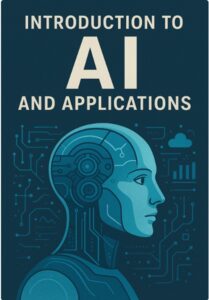Small Language Models (SLMs) refer to a class of artificial intelligence models that have emerged as an alternative to the large language models (LLMs) such as GPT-3. While LLMs, with their massive parameter sizes (e.g., GPT-3 with 175 billion parameters), exhibit impressive capabilities in generating human-like text and performing various language tasks, there are concerns related to efficiency, cost, and customizability associated with their large size. SLMs address these concerns by being smaller in terms of model size, typically considered to have fewer than 100 million parameters, and offer advantages in efficiency, cost-effectiveness, and customizability.
Key Points Regarding Small Language Models:
- Efficiency, Cost, and Customizability:
- Efficiency: SLMs are computationally more efficient than LLMs, leading to faster inference speeds and requiring less memory and storage space.
- Cost: The development and deployment of large language models involve significant computational resources, making them expensive. SLMs, being smaller, can be trained, deployed, and run on less powerful hardware, resulting in cost savings.
- Customizability: SLMs offer greater customizability, allowing developers to adapt models to more narrow domains and specialized applications. This is achieved through techniques like pretraining, fine-tuning, prompt-based learning, and architecture modifications.
- Model Size Considerations:
- SLMs are generally considered to have fewer than 100 million parameters, making them more manageable and suitable for specific use cases.
- Research suggests that even mid-sized language models with 1–10 million parameters can demonstrate basic language competencies, and useful capabilities for various tasks are consistently achieved at around 60 million parameters. Beyond 200–300 million parameters, performance gains become incremental.
- Training Methods for Efficient SLMs:
- Transfer Learning: SLMs leverage transfer learning, where they first train on broad datasets before specializing in a narrow target domain. This improves data efficiency in training small language models.
- Self-Supervised Learning: SLMs often use self-supervised learning for pretraining, where models predict masked or corrupted portions of input text sequences, enhancing their foundational language skills.
- Architecture Choices: Careful selection of neural network architectures, such as Efficient Transformers, contributes to parameter-efficient language models.
- Example Applications:
- SLMs are finding applications in various industries, including finance and entertainment.
- In finance, SLMs are used for tasks such as transaction classification, sentiment analysis in earnings call transcripts, and custom entity extraction from bank statements.
- In entertainment, SLMs contribute to natural language generation for script writing, dynamic dialogue generation in gaming, and improved metadata analysis for recommendation engines.
- Developer Frameworks:
- Open source technologies and developer-friendly platforms, such as Hugging Face Hub, Anthropic Claude, Cohere for AI, and Assembler, enable the creation and deployment of customized SLMs.
- Domain-Specific SLMs:
- Organizations are developing their own small, domain-specific language models tailored to their specific needs and data. These models offer advantages in terms of accuracy, confidentiality, responsiveness, and cost efficiency.
- Opportunities and Challenges:
- Opportunities: Customization for specialized domains, hybrid intelligence combining AI with human expertise, progress in training techniques, and potential for targeted commercial returns.
- Challenges: Risks of inappropriate reliance on AI, data quality and concept drift issues, transparency concerns, and potential malicious exploitation.
- Future Outlook:
- The rise of SLMs signifies the beginning of a new wave of industrial AI adoption, tailored to specific vertical needs. Continued innovation, responsible implementation, and addressing challenges are crucial for the future success of small language models.
In conclusion, Small Language Models represent a shift towards more efficient, cost-effective, and customizable solutions in the field of artificial intelligence, with a focus on addressing the limitations associated with the massive size of large language models.











